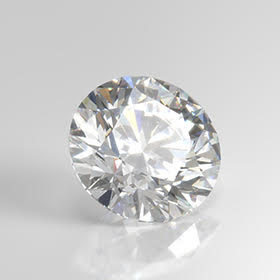Diamonds are some of the most desired gemstones in the world. People all over the world desire these stones for diamond engagement rings, pendants, and earrings. Traditionally, diamonds were mined from the earth by implementing extensive mining practices. However, in recent times, people have managed to create these sparkling stones in laboratories. Conditions that lead to the formation of diamond rough in the mantle of the earth are replicated in laboratories. In this blog, we will take a look at how to make a diamond in a laboratory.
How to Make a Diamond?
There are two ways to create a diamond in a lab. These methods replicate the same conditions that lead to the formation of diamonds in the earth. These methods are the CVD method and the HPHT method. These processes create the famed lab-grown diamonds. These diamonds are also called synthetic diamonds and cultured diamonds. Lab-grown diamonds are also known as man-made diamonds, lab-grown diamonds, and lab created diamonds.
CVD Diamond Process
CVD stands for Chemical Vapour Deposition. It is a method used to synthesize diamonds through a process involving the deposition of carbon atoms onto a substrate. This technique helps the creation of high-quality synthetic diamonds. A suitable substrate, which is often made up of materials like silicon or tungsten, is used as a base on which the diamond will grow. It is polished and cleaned to ensure a smooth surface.
After this, a mixture of gases like hydrogen and methane is introduced into a chamber. This gas provides the necessary carbon source for diamond growth. Sometimes, other gases may be added to control the growth conditions and diamond properties. High temperature is then introduced to this chamber which is typically around 800 to 1,200 degrees Celsius. Due to this extreme temperature, the gas molecules break down, and carbon atoms are released.
As the process continues, carbon atoms from the gas phase deposit onto the diamond nuclei and it gradually builds up diamond layers. The growth rate of diamonds can be controlled by adjusting the gas composition, temperature, and other process parameters. Once the desired diamond thickness is achieved, the temperature is gradually reduced, and the gas flow is stopped. The newly grown diamond substrate is then cooled down to room temperature.
CVD diamonds have gained a significant level of importance in various industries. This includes electronics, optics, cutting tools, and high-pressure research. This is due to its exceptional properties, such as hardness, thermal conductivity, optical transparency, and chemical resistance. It works as a viable alternative to natural diamonds for various applications.
HPHT Diamonds
The HPHT method, also known as High-Pressure High Temperature, is one of the two methods that is used to create synthetic diamonds. In this process, a carbon piece is subjected to intense pressure and high-temperature conditions that are similar to those found in the Earth’s mantle, where natural diamonds are formed. This method allows for the production of high-quality synthetic diamonds with properties that are identical to natural diamonds.
In this process, a tiny diamond seed crystal, which is typically a natural diamond or a synthetic diamond seed, is selected as the starting point for the growth process. The seed crystal serves as a base for the growth of a larger diamond. The diamond seed is placed within a press assembly which consists of two anvils made of a material capable of withstanding extreme pressure. Generally, tungsten carbide is used for these anvils.
A mixture of carbon and a metal catalyst is placed around the diamond seed. This carbon acts as the raw material for diamond growth. This metal catalyst assists in the transformation of carbon into diamond. The press assembly is subjected to extremely high pressure. Are you are wondering how much pressure to make a diamond? Extremely high pressure, which often exceeds five gigapascals, is applied.
Along with the application of high pressure, the press assembly is heated to temperatures typically ranging from 1300 to 1600 degrees Celsius. This high temperature promotes the conversion of carbon into diamond. The diamond grows layer by layer on the surface of the diamond seed.
Once the desired size of the diamond is achieved, the press assembly is gradually cooled down to room temperature. This cooling process allows the newly formed diamond to solidify and stabilize. The HPHT method produces synthetic diamonds that closely resemble natural diamonds in terms of their chemical and physical properties. Synthetic diamonds created in the lab are not only used for making jewelry but they are also used for creating cutting tools. These diamonds have several industrial applications.










